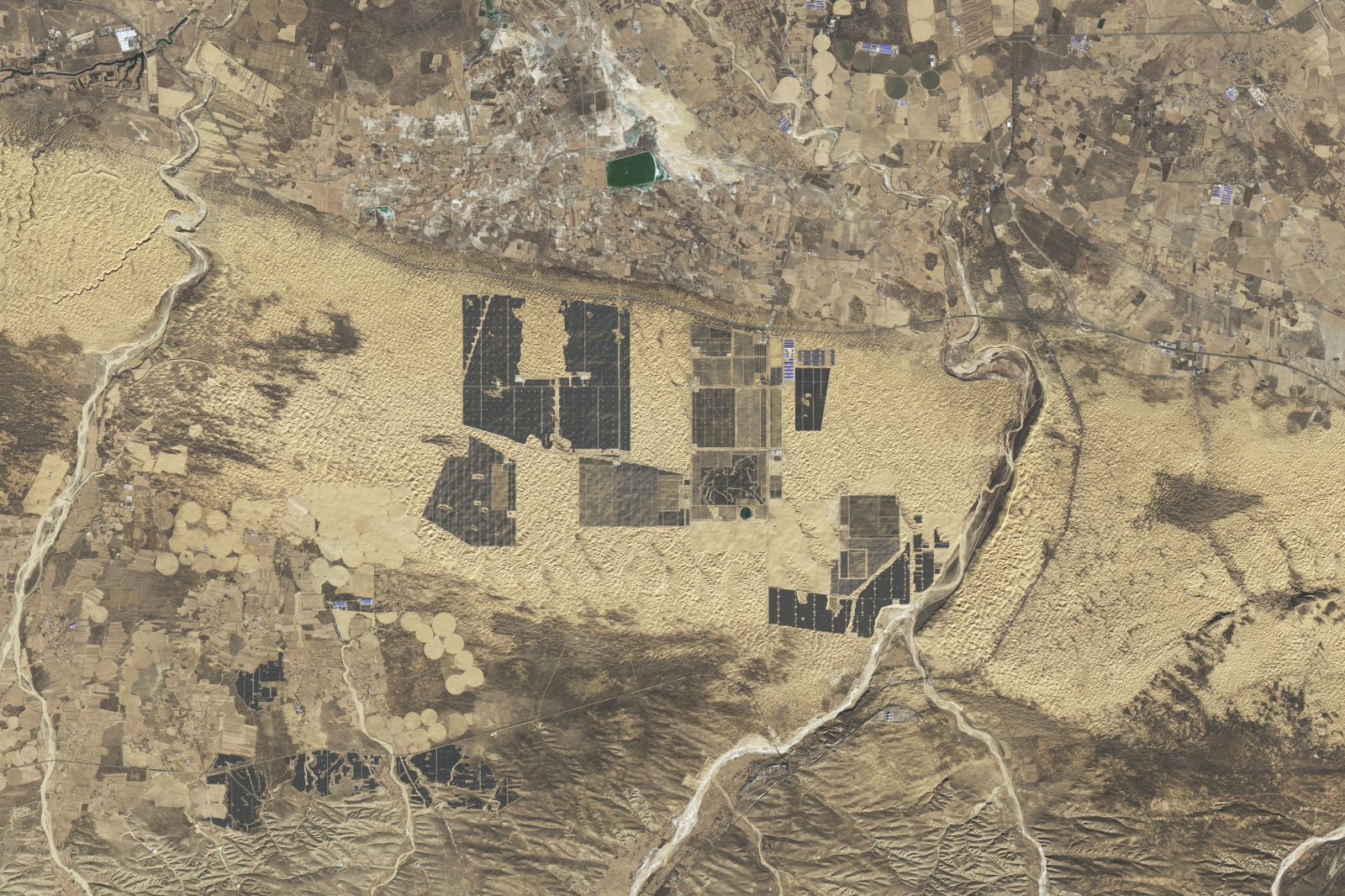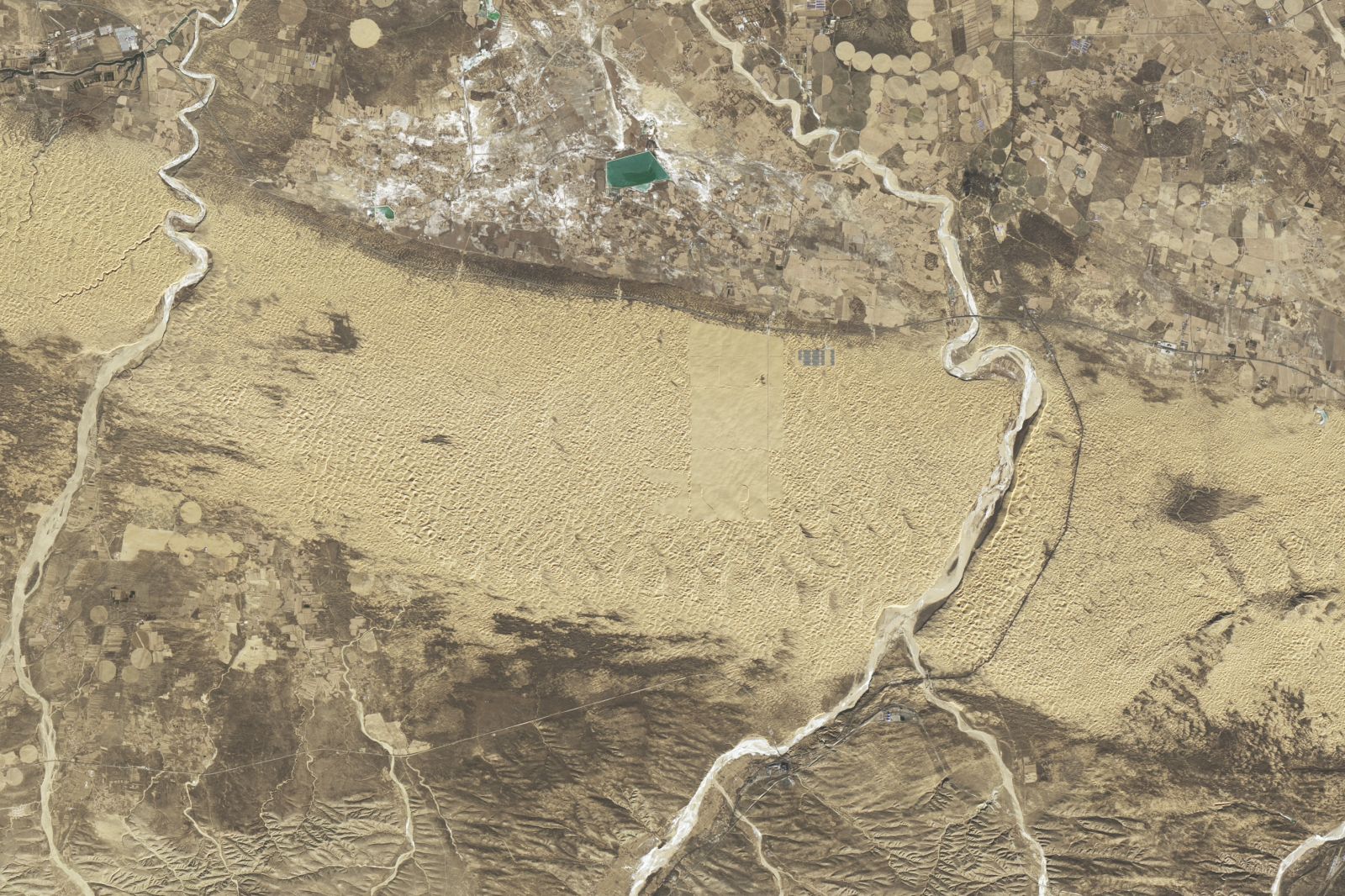Follow us on Google News (click on ☆)


The solar power plant seen from space in 2024 (top) and 2017 (bottom)
Image NASA
This pharaonic project, dubbed the "great solar wall," illustrates China's ambition to dominate renewable energy. It will far surpass existing solar parks. This project is part of a broader strategy to reduce CO₂ emissions and combat desertification.
A project with impressive dimensions
The Kubuqi Desert, with its 3,100 hours of annual sunshine, offers ideal conditions for solar energy. The farm, with an average width of 3 miles (5 km), will stretch over 250 miles (400 km). Ultimately, it will produce enough electricity to power Beijing, which consumed 135.8 terawatt-hours in 2023.
A 83-mile-long (133 km) section, already operational, generates 38 terawatt-hours per year. This is equivalent to a reduction of 31.3 million tons of CO₂, replacing 12.6 million tons of coal. This project shows how solar energy can transform desert areas into energy sources.
Unexpected ecological benefits
Beyond electricity production, this solar farm contributes to the fight against desertification. The panels act as windbreaks, stabilizing the sand and reducing evaporation. This promotes the growth of crops on 5,930 acres (2,400 hectares), creating a unique ecosystem under the panels.
This innovative approach combines renewable energy and agriculture. The elevated panels allow vegetation to thrive while limiting soil erosion. An example of synergy between technology and ecology.
A major advance for solar energy
China already dominates the solar sector, with 51% of global capacity in 2024. This project strengthens its position as a leader, with an average annual growth of 39,994 megawatts between 2017 and 2023. The United States and India follow far behind.
The Kubuqi farm uses cutting-edge technologies, such as bifacial panels, increasing production thanks to the reflection of light on the sand. These innovations could inspire other projects around the world.
A transformation visible from space
NASA satellites have captured the evolution of the site between 2017 and 2024. The images show a spectacular expansion of the solar panels, transforming the desert into a "photovoltaic sea." Part of the 2 GW plant, shaped like a horse visible from space, symbolizes this metamorphosis.
This project, planned for 2030, illustrates China's determination to reduce its carbon emissions while meeting its growing energy needs. And it is proof that deserts can become sources of energy and life.